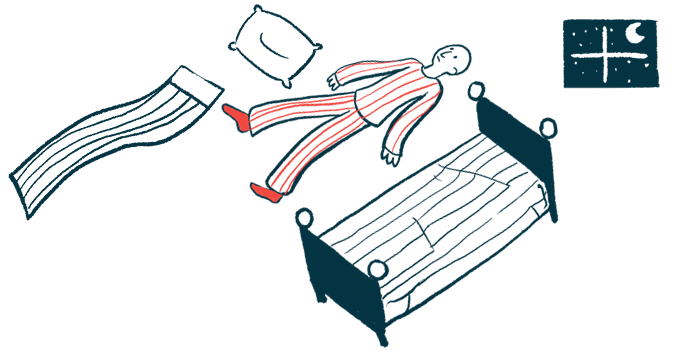Breathing problems during sleep often mistaken for apnea in SMA
Differentiating sleep breathing problems needed for optimal treatment: Study

People with spinal muscular atrophy (SMA) may experience bouts of breathlessness during sleep that can look at first glance like obstructive sleep apnea (OSA), but is not associated with a blockage of the airways that defines the sleep disorder, a case study highlights.
Distinguishing between true sleep apnea and similar-looking breathing problems in people with SMA is important to determine appropriate treatments, researchers say.
The paper, “Challenges in the identification of nocturnal respiratory events in adult patients affected by spinal muscular atrophy,” was published in Sleep Medicine.
Muscle weakness in SMA can affect breathing
SMA is characterized by muscle weakness. In people with more severe types of SMA, this weakness can affect the muscles in the chest and abdomen needed for breathing, resulting in respiratory problems. Breathing issues in people with SMA can be especially problematic during sleep.
In the report, scientists in Italy documented the case of a 30-year-old man with SMA type 2 who underwent a detailed assessment of his breathing while he was asleep.
The session revealed a period lasting a bit longer than a minute during which the patient experienced a marked reduction in breathing, with shallow breaths and less chest movement.
At first glance, this episode might look like OSA, which is a condition that occurs when the soft tissue in the mouth or throat relaxes and blocks the airway during sleep, the researchers wrote.
However, this patient’s episode showed some notable distinctions from OSA. For example, usually with OSA, a person’s breathing muscles will increase their activity over the course of the event, trying to suck in more air through the blocked airway. But this wasn’t the case in the patient.
OSA may also be characterized by paradoxical breathing, which is a change in normal breathing patterns where the chest expands while the abdomen contracts during an inhale, and then the chest contracts and abdomen expands on an exhale, rather than the other way around.
The patient did experience paradoxical breathing, but it was present before, during, and after the event, rather than occurring only during the event as would be expected in OSA. The researchers noted paradoxical breathing “is invariably present in children with type I SMA and may occur in many children with type II SMA.”
Although the event looked like OSA, it’s unlikely the patient was experiencing an obstruction in his upper airways, and it was rather due to underlying weakness of his breathing muscles, the researchers wrote.
Breathing problems during sleep common in adults with SMA
The researchers noted that, based on preliminary observations from the adult SMA patients in their care, these OSA-mimicking events seem to be fairly common in adults with SMA.
Differentiating between true OSA and other conditions is important for prescribing appropriate treatment, the scientists wrote. Specifically, people with OSA usually benefit from continuous positive airway pressure machines, whereas a related but distinct type of device called bilevel positive airway pressure machines are more suitable for non-OSA breathing issues in SMA.
“This case shows that relying solely on thoracic and abdominal motion during an event may lead to its misclassification not only in young, but also in adult patients with SMA, and to prescription of an inappropriate modality of positive pressure ventilation,” the scientists concluded, adding it’s important for clinicians to include “a careful consideration of clinical condition of patients” when determining these diagnoses.









